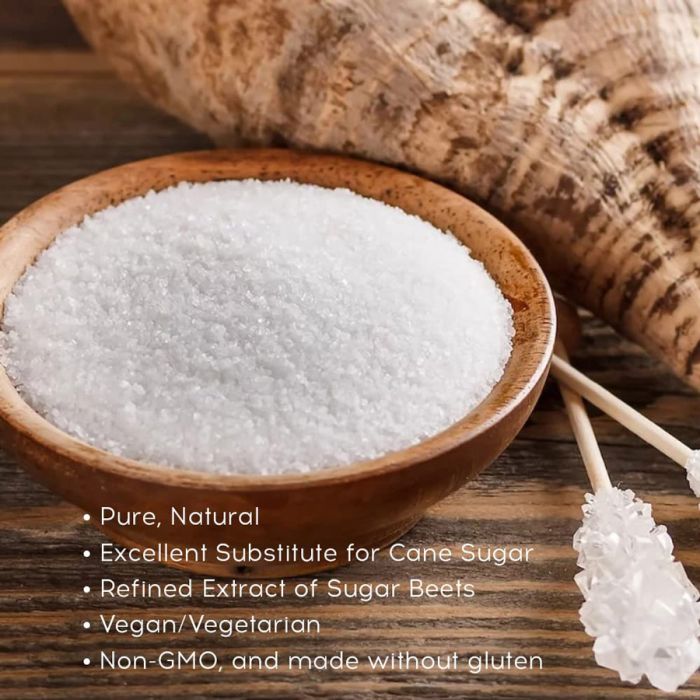The sourcing of beet sugar vs cane sugar affects farming impact in the sugar industry.
Discover the Uses and Conveniences of Beet Sugar Vs Cane Sugar in Your Daily Diet Regimen
Exploring the distinctive high qualities of beet and cane sugar discloses greater than just their sweetening abilities; it highlights their one-of-a-kind effect on health and cookeries. Beet sugar, understood for its subtle flavor, is often favored in delicate treats, whereas cane sugar, with its hint of molasses, includes richness to robust recipes. Each type holds its own dietary account and glycemic effects, inviting a much deeper understanding of their roles in a well balanced diet and lasting usage techniques.
Origin and Manufacturing Procedures of Beet and Cane Sugar

The distinctive climates and soil types needed for growing sugar beets and sugarcane contribute to distinctions in their farming techniques and geographical distribution, affecting the economics and sustainability of their production. beet sugar vs cane sugar.
Nutritional Comparison Between Beet Sugar and Cane Sugar
In spite of originating from various plants, beet sugar and cane sugar are nutritionally very comparable, both mainly being composed of sucrose. Each provides concerning 4 calories per gram, equating to about 16 calories per tsp. Structurally, both sugars are composed of about 99.95% sucrose, with marginal amounts of various other materials like dampness and trace minerals, which do not considerably change their dietary accounts.

Ultimately, when picking between beet sugar and cane sugar based on dietary content alone, both offer the same advantages and disadvantages as they are essentially kinds of the very same particle-- sucrose, supplying fast energy without various other nutrients.
Influence on Wellness: Glycemic Index and Caloric Material
Exploring better right into the results of beet sugar and cane sugar on wellness, it is very important to consider their glycemic index and caloric material. Both sugars are identified as sucrose, which contains glucose and site web fructose. This structure leads them to have a comparable influence on blood sugar level levels. The glycemic index (GI) of both beet and cane sugar is around 65, categorizing them as high-GI foods, which more can trigger fast spikes in blood sugar levels. This is a vital element for people handling diabetes mellitus or those attempting to maintain their power degrees throughout the day.
Each type of sugar contains around 4 calories per gram, making their caloric web content equivalent. For those checking caloric consumption, especially when handling weight or metabolic wellness problems, understanding this equivalence is crucial (beet sugar vs cane sugar). Excessive intake of any kind of high-calorie, high-GI food can contribute to health issues such as excessive weight, heart illness, and insulin resistance.
Environmental and Economic Considerations of Sugar Manufacturing
Beyond health and wellness influences, the manufacturing of beet and cane sugar also elevates significant environmental and financial issues. Sugar beet cultivation tends to call for cooler environments and has a lower geographical impact compared to sugar cane, which flourishes in tropical regions.
Furthermore, the usage of pesticides and plant foods in both beet and a fantastic read cane sugar farming can bring about soil destruction and pollution, additional influencing biodiversity and neighborhood water bodies (beet sugar vs cane sugar). The selection in between growing sugar beet or cane usually hinges on neighborhood environmental problems and financial aspects, making the sustainability of sugar production a complex concern
Culinary Applications and Taste Distinctions
While the ecological and financial facets of sugar production are undoubtedly considerable, the selection between beet and cane sugar additionally affects culinary applications and flavor accounts. Beet sugar, acquired from the sugar beet plant, is understood for its remarkably neutral preference.
Walking stick sugar, extracted from sugarcane, frequently keeps molasses traces, which give a distinct splendor and depth. This mild molasses taste improves the complexity of baked goods, sauces, and marinades. It is especially favored in products where a caramel touch is preferred, such as in brownies or gingerbread. The minor variant in moisture web content between beet and cane sugar can influence the appearance and consistency of recipes, making cane sugar a favored selection for particular dishes that benefit from its distinct residential properties.

Conclusion
In conclusion, both beet and cane sugar have distinctive beginnings and production procedures, offering comparable nutritional accounts with slight distinctions in sodium web content and taste. While their effect on health, particularly pertaining to glycemic index and calories, is comparable, the option between them commonly boils down to environmental, economic variables, and particular culinary requirements. Understanding these facets can assist consumers in making educated choices that line up with their health goals and flavor preferences.